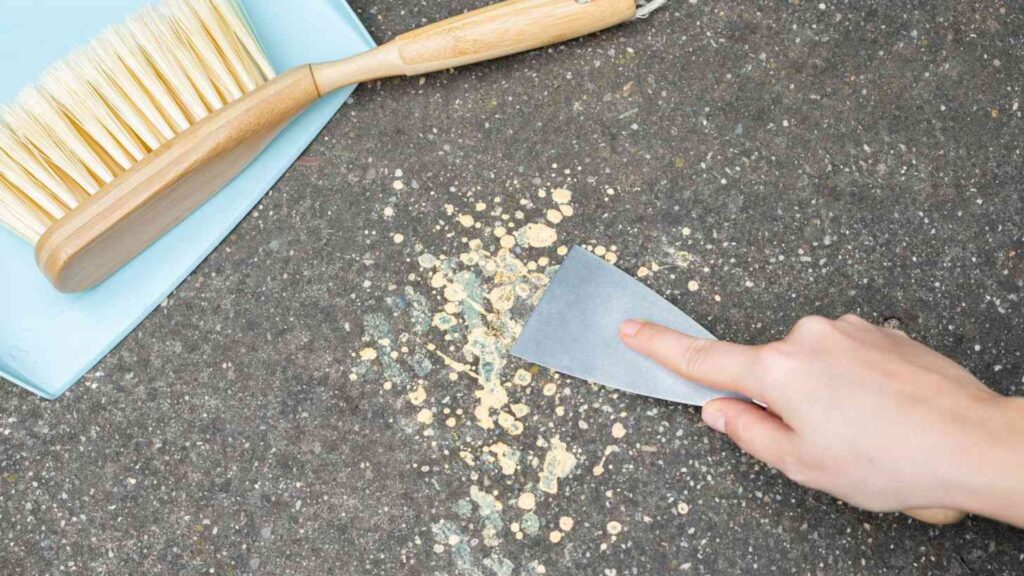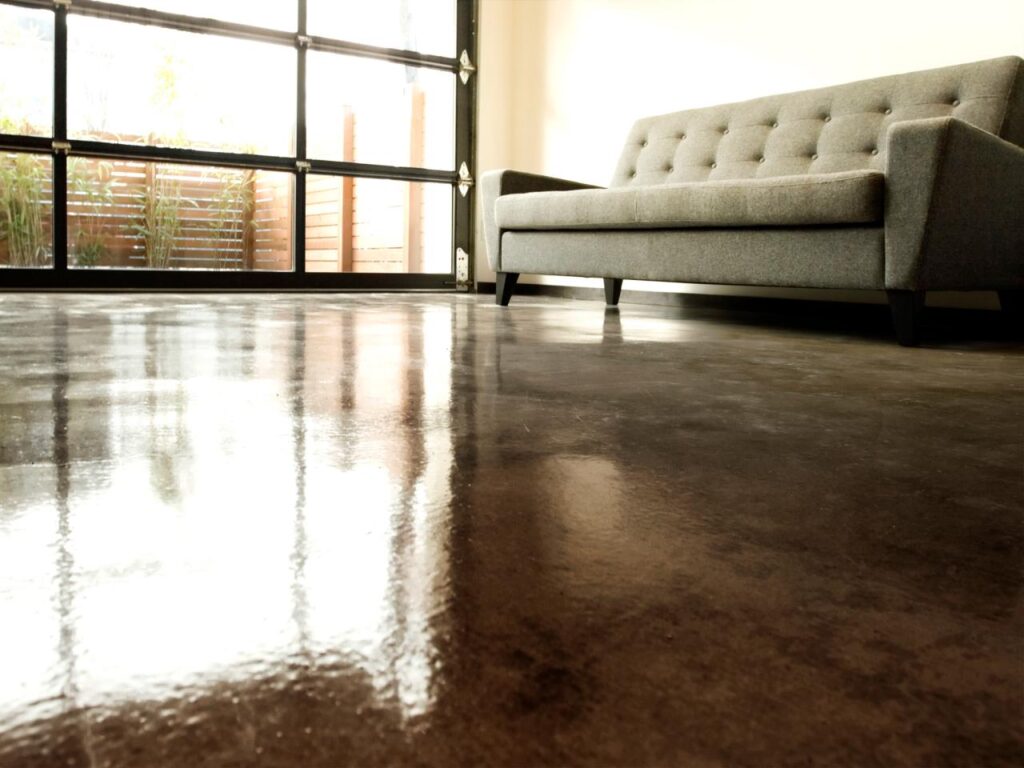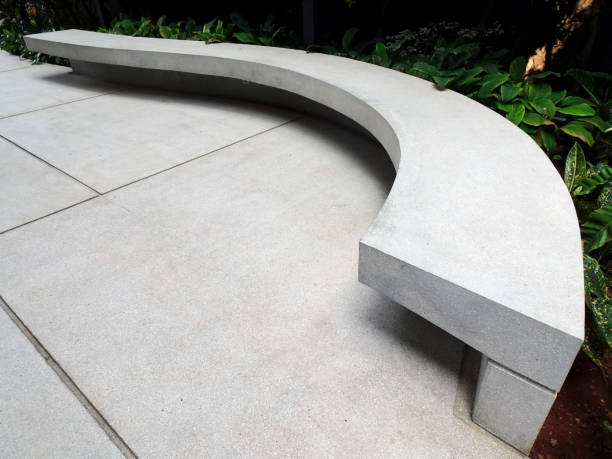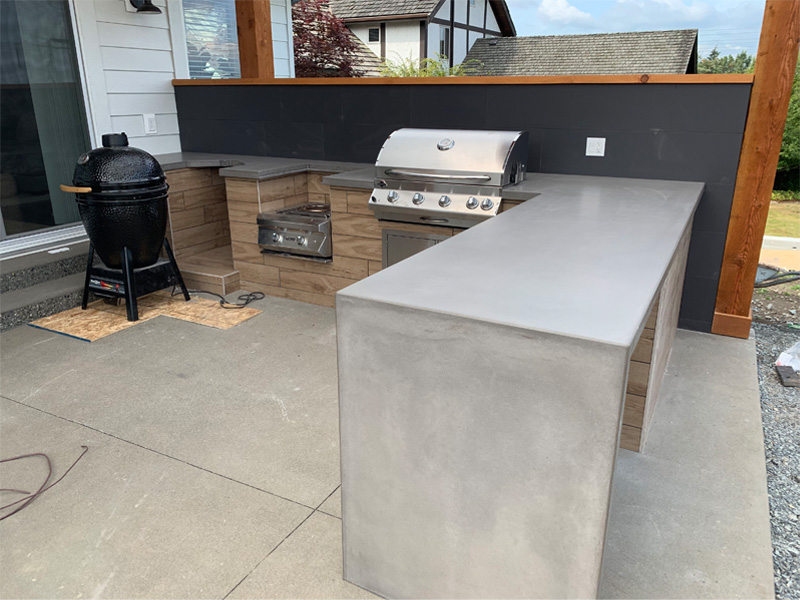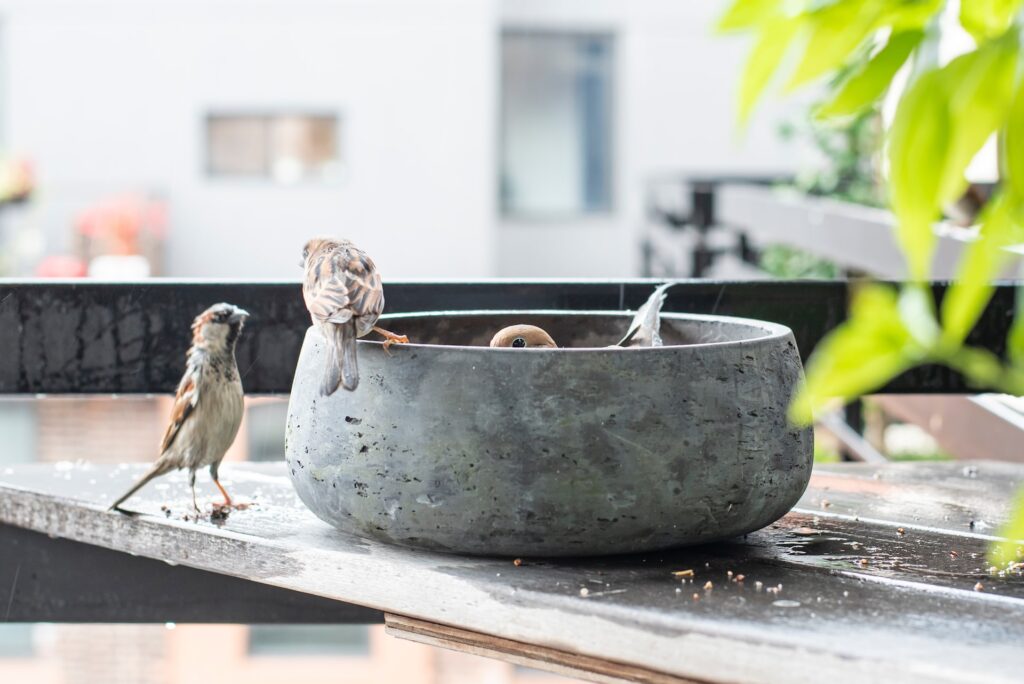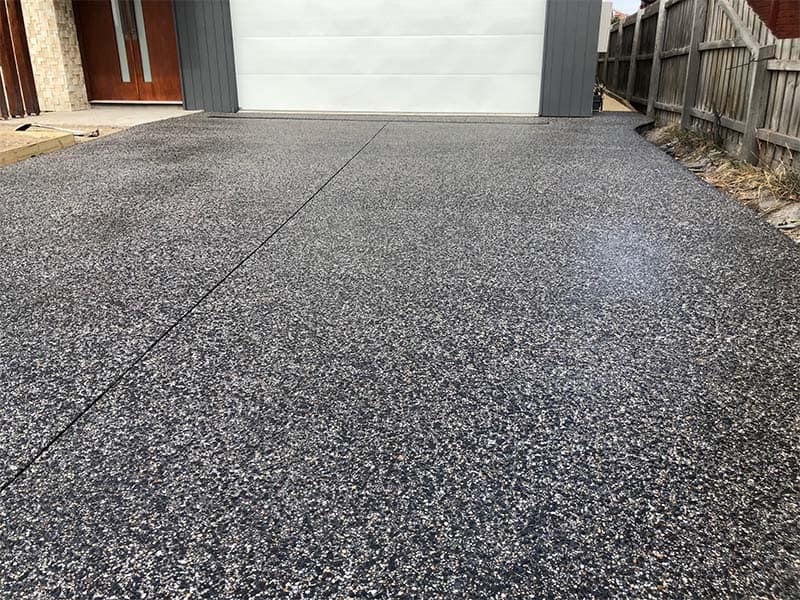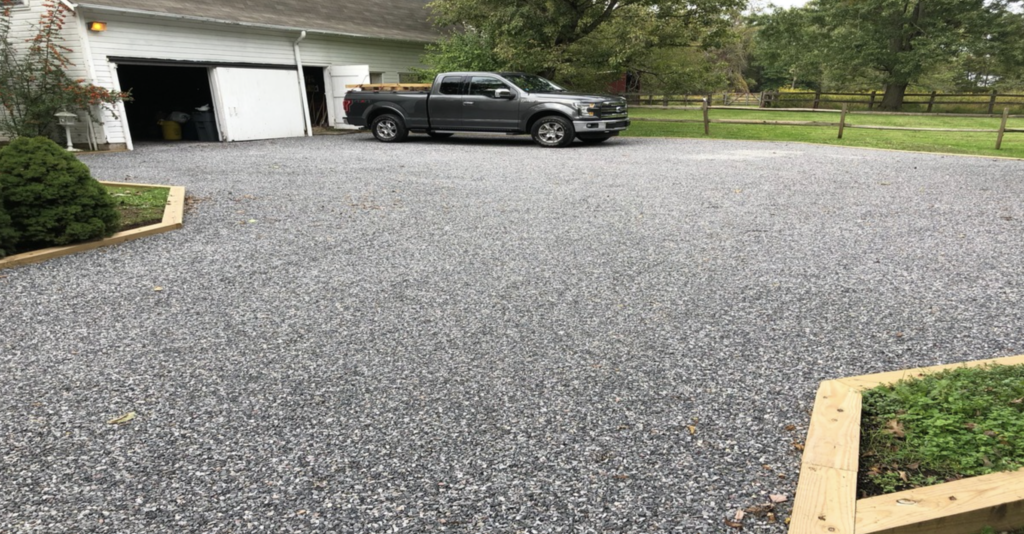Welcome to your ultimate guide on how to get paint off concrete in New Zealand, whether it’s your driveway, patio, or garage floor that needs refreshing. Paint on concrete can be a stubborn problem, but with the right techniques, you can restore your surfaces to their original condition without causing damage. In this post, we’ll walk you through the most effective methods, from simple scraping to eco-friendly solutions, and everything in between, all while considering New Zealand’s unique climate and environmental guidelines. Whether you’re dealing with small splatters or large areas, we’ve got you covered with easy-to-follow steps and practical advice to make the job easier.
To remove paint from concrete in NZ, start by cleaning the surface thoroughly to remove dirt and debris. Use a scraper or wire brush for small areas, or opt for a pressure washer on larger surfaces. For stubborn paint, apply a chemical paint stripper, ensuring it’s suitable for NZ’s environmental guidelines. Let it sit for the recommended time, then scrape off the softened paint. Natural solutions like vinegar or baking soda can work for smaller spots. Always wear protective gear, and consider resealing the concrete after removal to prevent future stains.
- Understanding Paint Removal Challenges On Concrete
- Tools And Materials You’ll Need
- Step-By-Step Guide On How To Get Paint Off Concrete
- Dealing With Stubborn Paint Stains
- Post-Removal Concrete Care
- Preventing Future Paint Stains On Concrete
- Common Mistakes To Avoid When Removing Paint From Concrete
- FAQs: About How To Get Paint Off Concrete NZ
- How do I remove old paint from concrete in New Zealand?
- Can vinegar remove paint from concrete?
- What is the best paint remover for concrete in NZ?
- Is it safe to use a pressure washer to remove paint from concrete?
- How do I dispose of paint and chemicals after removal?
- Can I remove paint from concrete without chemicals?
- How long does it take to remove paint from concrete?
- What should I do if the paint won’t come off after the first attempt?
- Do I need to seal the concrete after removing paint?
- Should I hire a professional to remove paint from concrete?
- Conclusion
Understanding Paint Removal Challenges On Concrete
Removing paint from concrete can be a daunting task, primarily due to the unique characteristics of concrete and the types of paints commonly used. This section will explore why paint adheres so strongly to concrete and the challenges involved in safely removing it, especially in New Zealand, where environmental and safety regulations must be considered.
Why Paint Sticks So Well to Concrete
Concrete is a highly porous material, which means that when paint is applied, it doesn’t just sit on the surface; it penetrates deeply into the tiny holes and crevices of the concrete structure. This makes the paint bond more firmly to the surface, complicating the removal process. The longer the paint has been on the concrete, the more embedded it becomes, making it harder to strip away completely. In addition, factors such as temperature, humidity, and surface preparation can affect how well the paint adheres.
In New Zealand, several types of paints are commonly used on concrete surfaces, including:
- Acrylic Paint: One of the most popular choices for concrete in New Zealand due to its durability and water resistance. Acrylic paint is water-based, which makes it somewhat easier to remove than oil-based options, but it can still soak into the porous surface of concrete, creating removal difficulties.
- Oil-Based Paint: Known for its smooth finish and tough durability, oil-based paint can be more challenging to remove from concrete. It penetrates deeply and often requires the use of strong chemical paint strippers to dissolve it.
- Epoxy Paint: This is commonly used for garage floors and industrial concrete surfaces in New Zealand. Epoxy forms a very hard and resistant surface, which is excellent for heavy-duty use but incredibly difficult to remove without special tools or powerful chemicals.
Each of these paint types presents different challenges when it comes to removal. Acrylic paint may require multiple applications of a remover, while oil-based and epoxy paints often need chemical stripping agents, mechanical grinding, or a combination of both to break their strong bond with the concrete.
Safety First: Preparing for Paint Removal
Before beginning any paint removal project, safety should be the top priority. Paint stripping, especially on porous surfaces like concrete, can release harmful chemicals and dust into the air, which can pose health risks if not managed correctly. Here are essential safety measures to follow:
- Protective Gear: Always wear gloves, masks, and protective eyewear to avoid exposure to hazardous substances. Depending on the paint removal method (chemical, sanding, or grinding), a respirator mask may be necessary to protect your lungs from fine dust particles and fumes. In New Zealand, where the use of certain chemicals may be regulated, this is particularly important.
- Ventilation: If you’re working indoors, make sure the area is well-ventilated. Paint removal can produce noxious fumes, especially when using solvents or strippers on oil-based and epoxy paints. Outdoor projects should also be mindful of wind direction to avoid blowing harmful dust towards populated areas.
- Disposal of Paint Residue: In New Zealand, it’s crucial to consider the environmental impact when disposing of paint residue and chemicals. Paint chips and dust can contain harmful materials, especially if the paint contains lead or other toxic substances. It’s essential to collect all debris and ensure it’s disposed of properly, following local guidelines. Never wash paint debris down storm drains or into the soil, as it can contaminate water sources and harm wildlife.
Regarding outdoor use of chemicals, New Zealand has strict regulations to protect the environment. For example, using certain chemical paint strippers outdoors may require adherence to specific guidelines to prevent runoff into waterways. You can refer to local council regulations or the New Zealand Environmental Protection Authority for detailed information on what products can be used safely outdoors. A good resource to check is the EPA guidelines on hazardous substances.
By understanding the nature of paint adhesion to concrete and taking the necessary safety precautions, you can make the process of removing paint from concrete surfaces much smoother and safer, ensuring compliance with New Zealand’s environmental and safety regulations.
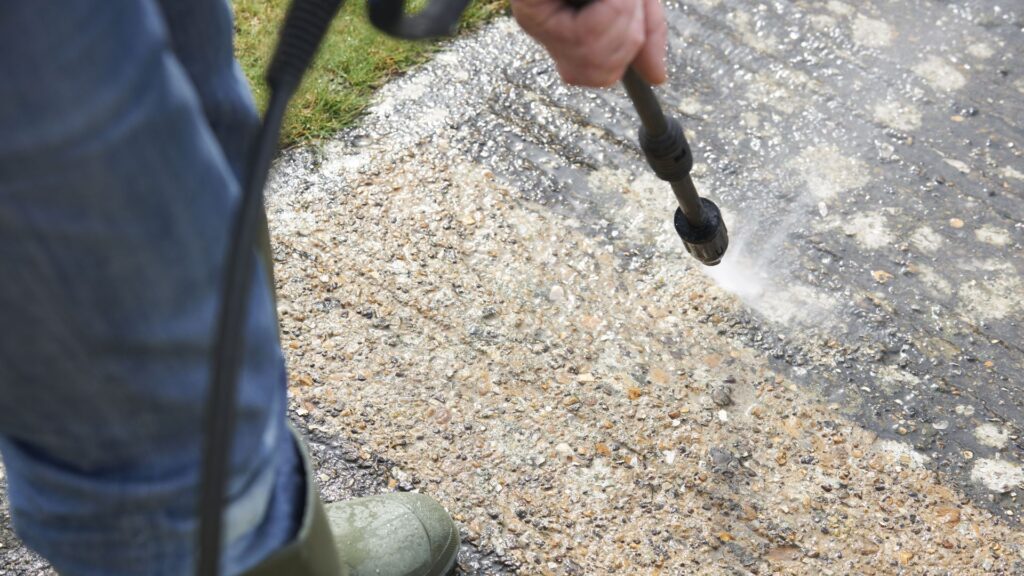
Tools And Materials You’ll Need
Whether you’re undertaking a DIY paint removal project or prepping surfaces for a professional finish, having the right tools and materials is crucial. Below, we’ll explore the essential tools, different types of chemical strippers, and natural alternatives for removing paint—perfectly tailored for New Zealand’s unique environment and weather conditions.
Basic Tools for Paint Removal
When it comes to removing paint, having the right tools in your kit can make a significant difference in efficiency and final results. Here are some commonly used tools you’ll want to consider:
- Scrapers: A handheld scraper is your best friend when manually removing paint. Flat or curved-blade scrapers work well for getting into different surfaces and textures. Consider investing in a good-quality, sturdy scraper for consistent performance.
- Wire Brushes: These are particularly effective for removing loose or peeling paint, especially on textured surfaces like brick or concrete. A stiff wire brush can help scrape off layers of paint that might be resistant to softer tools.
- Power Washers: If you’re dealing with exterior surfaces, a power washer can make the job significantly easier. It uses high-pressure water to strip away paint on wood, concrete, and other durable materials. Keep in mind that this is best suited for exterior jobs due to the water and pressure involved.
For Kiwis looking to purchase these tools, local suppliers such as Bunnings Warehouse or Mitre 10 carry a wide range of options at various price points. You can visit their stores across New Zealand or browse their online catalogs to find scrapers, wire brushes, and power washers that suit your project’s needs.
Chemical Paint Strippers
Chemical paint strippers are an excellent option when you need to remove multiple layers of paint quickly and efficiently. Let’s take a look at the different types available and how to choose the best one for your project in New Zealand.
- Solvent-based Strippers: These are traditional paint removers, often containing potent chemicals like methylene chloride. They work quickly and can strip multiple layers of paint at once. However, they are not the most eco-friendly option and may emit strong fumes, which is something to consider if you’re working in enclosed spaces.
- Eco-friendly Strippers: With growing environmental consciousness, there are now several eco-friendly paint strippers available in New Zealand. These products use natural or biodegradable ingredients, making them safer for both the environment and your health. Products like Citristrip are non-toxic, less harmful to the skin, and still provide effective results. You can find such products at Mitre 10. or Bunnings, both of which stock eco-friendly paint removal solutions.
- NZ-Specific Considerations: When selecting a chemical stripper, keep New Zealand’s climate and environmental regulations in mind. Some strippers work better in warmer or cooler temperatures, so always read the label to ensure it’s suitable for your region’s specific weather patterns. Additionally, many councils have guidelines for disposing of chemical waste, so be sure to follow local regulations to minimize environmental impact.
Natural Alternatives for Removing Paint
If you prefer a more natural, DIY approach, several household items can serve as paint removers. While these methods may take more time or require more elbow grease, they are often gentler on the environment and your health.
- Vinegar: Vinegar is a popular natural remedy for removing paint, especially on metal surfaces. When heated, vinegar can help soften old, stubborn paint, making it easier to scrape away. However, this method is most effective on smaller jobs and may not perform as well on larger surfaces or thicker paint layers.
- Baking Soda: Baking soda, combined with hot water, can also be used to lift paint, particularly from metal surfaces like hardware or tools. It works best for smaller objects that can be boiled or soaked in a baking soda solution. This method is less effective on larger, more porous surfaces like wood or concrete.
- New Zealand’s Weather Impact: One thing to keep in mind with natural alternatives is how well they perform in New Zealand’s variable weather conditions. For example, humidity and cold can affect the drying and effectiveness of natural paint removers, so it’s crucial to plan your project accordingly. In colder months, you may find that methods like vinegar and baking soda take longer to work.
Pros and Cons:
- Vinegar: Cheap, easy to find, but slow and not ideal for large projects.
- Baking Soda: Great for small metal items but less useful for larger surfaces.
- Household Ingredients: These alternatives are environmentally friendly but often require more time and effort than chemical or power-based methods.
Whether you opt for traditional tools, chemical strippers, or natural alternatives, each method has its pros and cons. New Zealand’s unique climate and environmental concerns should be considered when choosing the best approach. For easy access to high-quality tools and eco-friendly products, head to trusted local suppliers like Mitre 10, Bunnings, or Resene. With the right tools and approach, your paint removal project will be a breeze.
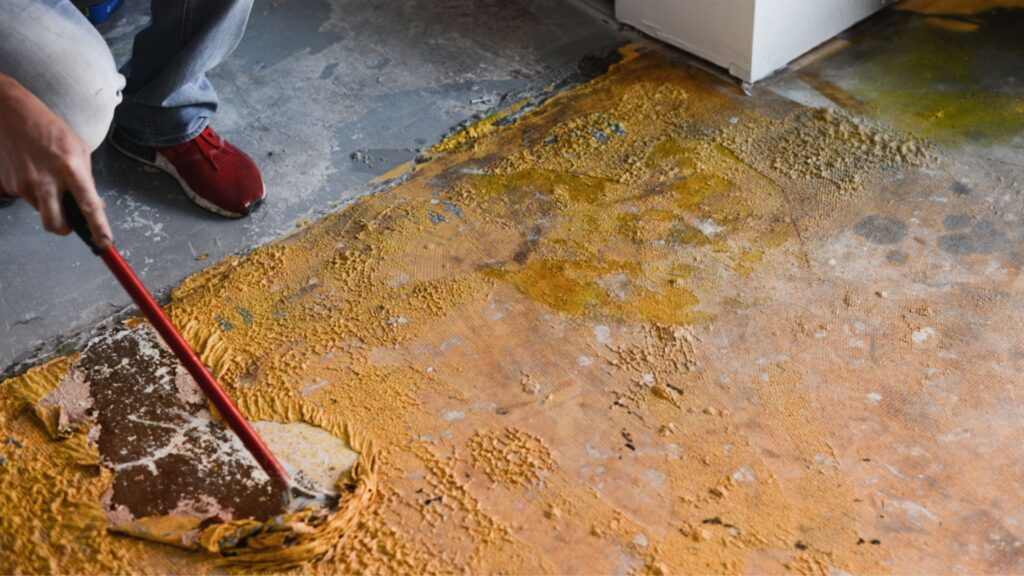
Step-By-Step Guide On How To Get Paint Off Concrete
Concrete surfaces, such as driveways, patios, or walls, can sometimes get stained with paint from various DIY projects or accidental spills. Removing paint from concrete requires patience and the right approach to ensure effective results without damaging the surface. Here’s a detailed step-by-step guide to help you remove paint from concrete, whether it’s a small stain or a larger area.
Preparing the Area
Before starting any paint removal process, it’s essential to properly prepare the area to ensure the best outcome and avoid damaging surrounding areas.
- Clean the Surface: Begin by cleaning the surface to remove any debris such as dirt, moss, or algae, which are common in regions like New Zealand due to damp conditions. This step helps prevent interference with the paint removal process.
- Protect Surrounding Areas: Use plastic sheeting or old cloths to cover areas that you don’t want to be treated. This prevents accidental damage or contamination, especially if you plan to use chemical strippers or high-pressure water.
- Safety First: Always wear protective gear like gloves, safety goggles, and a dust mask. Paint removal processes can create dust, fumes, or splashes that may be harmful.
Method 1: Scraping and Mechanical Removal
For smaller areas or thin paint layers, mechanical removal might be enough to get the job done. Here’s how:
- Use a Scraper: A handheld scraper or putty knife can be effective for lifting paint from the surface, especially if the paint is already chipping or flaking.
- Wire Brushes: For tougher spots, wire brushes work well in loosening paint from textured surfaces. Apply firm pressure but be cautious not to damage the concrete.
- Pressure Washer Option: If manual scraping isn’t enough, consider renting a pressure washer. Many hardware stores in New Zealand offer pressure washers for hire. When using a pressure washer, keep the nozzle at least 30cm away from the surface to avoid gouging the concrete. Start with a lower pressure setting and increase if necessary, but avoid excessive force that could damage the surface.
Method 2: Using Chemical Strippers
For stubborn or large areas, chemical paint strippers are a more aggressive option. Here’s a simple guide to using chemical strippers:
- Choose the Right Stripper: Ensure that you select a paint stripper designed for use on concrete. Gel-based or paste strippers work well because they adhere to vertical surfaces without dripping.
- Application Process:
- Apply the paint stripper generously to the affected area using a brush or roller. Make sure to follow the manufacturer’s instructions, especially regarding the thickness of the application.
- Allow the stripper to sit for the recommended amount of time (usually between 15 minutes and several hours). The chemical will soften the paint during this period.
- Scrape the Paint: Once the paint has softened, use a scraper to lift it off. You might need to reapply the stripper for thicker paint layers.
- Clean-Up and Disposal: After scraping, clean the area with water and a stiff brush. It’s crucial to properly dispose of any chemical waste, as New Zealand has strict regulations for disposing of hazardous materials. Check with your local council or recycling centers for proper disposal guidelines.
Method 3: Using a Power Washer
Using a power washer can be an efficient method for removing paint from large outdoor surfaces, like driveways or patios. Here’s what you need to know:
1. Advantages of Power Washing: Power washers use high-pressure water to blast away paint, dirt, and debris. This method works well for larger areas and can save time compared to manual scraping.
2. Important Considerations:
- Pressure Settings: Always use the correct pressure setting to avoid damaging the concrete. A setting between 2000 and 3000 PSI is typically sufficient for paint removal, but test a small area first.
- Distance from Surface: Hold the nozzle about 30-45cm away from the surface. Getting too close can cause damage by etching or pitting the concrete.
- Environmental Impact: Be mindful of where the paint residue and water runoff go, especially if using chemicals beforehand. Ensure that they don’t drain into stormwater systems or sensitive areas.
Method 4: DIY Natural Solutions
If you’re dealing with a small paint stain or prefer a less aggressive approach, natural solutions such as vinegar or baking soda can be helpful. However, they may not be as effective for thicker or larger areas.
- Vinegar: Heat white vinegar and pour it over the paint stain. Let it sit for 15-20 minutes before scrubbing with a brush. Vinegar helps to soften the paint, making it easier to scrape off.
- Baking Soda: Create a thick paste by mixing baking soda with water. Apply the paste to the paint-stained area and let it sit for 15-30 minutes before scrubbing with a stiff brush.
- Realistic Expectations: While natural solutions are environmentally friendly, they are best suited for small paint stains or thinner paint layers. Don’t expect these methods to work as quickly or effectively as chemical strippers or power washing on large areas.
Removing paint from concrete can be a time-consuming task, but with the right methods and tools, you can achieve great results. Whether you opt for manual scraping, chemical strippers, or a power washer, remember to work safely and be mindful of waste disposal regulations, particularly in New Zealand. If you’re dealing with stubborn stains, don’t hesitate to try a combination of these methods for the best outcome.

Dealing With Stubborn Paint Stains
When Paint Won’t Budge
Dealing with stubborn paint stains on concrete can be incredibly frustrating, especially when it seems like nothing works. Concrete is porous, which allows paint to seep deep into the surface, making some stains especially tough to remove. If you’ve already tried the basics like soap, water, and a scrub brush without success, don’t worry—you’re not out of options yet.
For particularly stubborn paint spots, persistence is key. Often, repeated treatments can gradually break down the paint layers. A multi-step process might be necessary, so don’t give up after the first try. Here are a few advanced strategies to consider:
- Chemical Paint Strippers: These products are designed to break down paint chemically, making it easier to remove. For deeper or more resistant stains, using a more potent stripper can make all the difference. Look for products specifically made for concrete surfaces, as they are formulated to penetrate the porous material. When using chemical strippers, make sure to follow safety guidelines, such as wearing gloves and working in a well-ventilated area.
- Boost the Power with a Pressure Washer: After applying a chemical treatment, a high-pressure washer can help lift stubborn paint. The pressure from the water works well to dislodge any remaining paint that the stripper has loosened. Just be cautious with the water pressure—too much can damage the concrete surface.
- Sandblasting: For the most resistant stains or larger paint spills, sandblasting is a powerful option. This technique uses a stream of abrasive material to remove the paint from the surface of the concrete. It’s particularly effective on thicker or older paint layers that other methods can’t tackle. However, this process requires specialized equipment and should only be performed by someone with experience. In New Zealand, many professional sandblasting services are available to help with this task, ensuring that the concrete isn’t damaged in the process.
Professional Help: When to Call In the Experts
If you’ve tried everything—chemical treatments, pressure washing, even sandblasting—and the paint still won’t come off, it might be time to call in a professional. Sometimes, the cost and effort of doing it yourself just isn’t worth it, especially if the paint has penetrated deeply into the concrete.
Hiring a professional is particularly useful for larger areas or when the stain is on a highly visible surface. Professionals have access to industrial-grade equipment and specialized products that can tackle even the toughest paint stains. Plus, they know how to remove the paint without damaging your concrete, which can happen if you’re not careful with DIY methods.
In New Zealand, there are several services that specialize in concrete paint removal. Many offer a range of techniques, from chemical treatments to advanced sandblasting, ensuring that the job gets done efficiently and safely. The cost for professional concrete paint removal can vary depending on the size of the area, the type of paint, and how deeply it has penetrated. On average, you can expect to pay between NZD $150 to $300 for smaller jobs, while larger projects can cost upwards of NZD $500 or more.
Some notable companies in New Zealand offering these services include:
- Paint Tech Removal Services: Specializing in eco-friendly chemical treatments and pressure washing for concrete surfaces.
- ProSand NZ: Experts in sandblasting and paint removal for both commercial and residential properties.
- Blast Off Concrete Solutions: Providing professional sandblasting and paint removal services throughout the North and South Islands.
When deciding whether to hire a professional, consider the cost of renting or purchasing the equipment needed for DIY methods. In many cases, hiring a pro can actually save time and money, particularly if the stain is deep or extensive.
Dealing with stubborn paint stains on concrete can be challenging, but with the right approach, it’s possible to restore your surfaces. If DIY methods fail or seem too time-consuming, professional services in New Zealand offer a reliable solution. Whether using chemical treatments, pressure washing, or sandblasting, tackling tough paint stains doesn’t have to be a solo battle. By weighing the pros and cons of doing it yourself versus hiring experts, you can make the best choice for your specific situation.

Post-Removal Concrete Care
When removing paint from concrete surfaces, proper post-removal care is crucial to ensure the longevity and appearance of your concrete. Whether you’re working on a driveway, patio, or any other concrete surface, following the right steps after the paint is removed can protect the surface and prevent future damage. In this guide, we’ll discuss how to clean up the area and recommend sealing techniques to preserve your concrete, all while keeping in mind New Zealand’s unique environmental conditions and regulations.
Cleaning Up the Area
After removing paint from your concrete, one of the most important tasks is cleaning the area thoroughly. Improper cleanup can result in harmful effects on both your concrete and the environment.
Disposing of Removed Paint: A Step Towards Environmental Responsibility
In New Zealand, strict regulations are in place to ensure that hazardous materials, such as paint, are disposed of correctly to prevent contamination of the environment. Paint, particularly oil-based paint, often contains toxic chemicals like lead or volatile organic compounds (VOCs) that can be harmful to local ecosystems if not handled properly. As a responsible homeowner or contractor, you should:
- Collect all paint chips and residues during removal.
- Avoid washing them into drains or onto grass, as this can lead to water contamination.
- Instead, bag the paint waste securely and take it to a local hazardous waste disposal facility. Many councils in New Zealand offer dedicated drop-off points for hazardous materials.
To find the nearest disposal point, check with your local council, as different regions have specific guidelines on how to handle and dispose of paint waste.
Cleaning and Drying: Adapting to New Zealand’s Climate
Once the paint has been safely removed and disposed of, cleaning the concrete surface is essential. Begin by sweeping away any remaining dust or debris. Next, use a mild detergent mixed with water to scrub the surface, removing any leftover paint particles or cleaning agents used during the paint removal process.
Given New Zealand’s generally high humidity, especially in coastal regions, it’s crucial to ensure the concrete surface dries properly. Failing to dry the surface thoroughly before applying a sealer can trap moisture, leading to issues such as mold growth, efflorescence, or reduced sealer effectiveness. To speed up the drying process:
- Choose a dry, sunny day for your project.
- If weather conditions are unfavorable, consider using fans or heaters to expedite drying.
- Always allow at least 24-48 hours of drying time before moving on to the next step of sealing.
Sealing and Protecting Your Concrete
After thoroughly cleaning and drying the concrete, applying a protective sealant is highly recommended. Sealing the surface ensures it remains protected from moisture, future paint adhesion, stains, and even damage caused by weather conditions, which is particularly important in New Zealand’s variable climate.
Why You Should Seal Your Concrete
Concrete sealers act as a barrier, preventing water and contaminants from penetrating the surface. They also make it easier to remove any future stains or paint spills, and they enhance the overall durability of the concrete.
Additionally, sealed concrete is more resistant to cracking, a common issue in regions with fluctuating temperatures or significant rainfall, like parts of New Zealand. Investing in a good-quality concrete sealer will save you time and money on future maintenance.
Recommended Concrete Sealers Available in NZ
When selecting a concrete sealer, it’s important to choose products that are both effective and widely available in New Zealand. Some highly recommended options include:
- Resene Concrete Clear: This waterborne sealer is designed specifically for concrete and masonry surfaces. It provides a protective finish that enhances durability and appearance.
- Sika Pro Select CureSeal: A reliable option for sealing and curing concrete surfaces. This product is ideal for protecting outdoor concrete in high-moisture areas.
- Wattyl Solagard Clear Sealer: This sealer is known for its excellent resistance to New Zealand’s UV exposure and coastal conditions, making it perfect for outdoor concrete surfaces like patios and driveways.
- Crommelin Concrete & Paving Sealer: Available at most NZ hardware stores, Crommelin’s product provides a durable finish that protects against water and oil-based stains.
- Drylok Concrete Protector: This sealer offers long-lasting protection against moisture and is particularly well-suited for areas prone to heavy rain or coastal exposure.
Before applying the sealer, carefully read the manufacturer’s instructions to ensure optimal application. In most cases, you will need to apply two coats, allowing adequate drying time between each layer. A well-applied sealer can last for years, providing ongoing protection for your concrete.
Post-removal concrete care is not just about cleaning the surface—it’s about ensuring long-term protection and preserving the appearance of your concrete. In New Zealand, environmental regulations require responsible disposal of paint, while the country’s climate demands careful attention to drying and sealing the concrete. By following these best practices and using high-quality sealers available locally, you’ll not only safeguard your concrete but also enhance its durability and aesthetic appeal for years to come.
Implementing these steps will save you from potential problems down the line and keep your concrete looking fresh and protected, no matter what New Zealand’s weather throws at it.
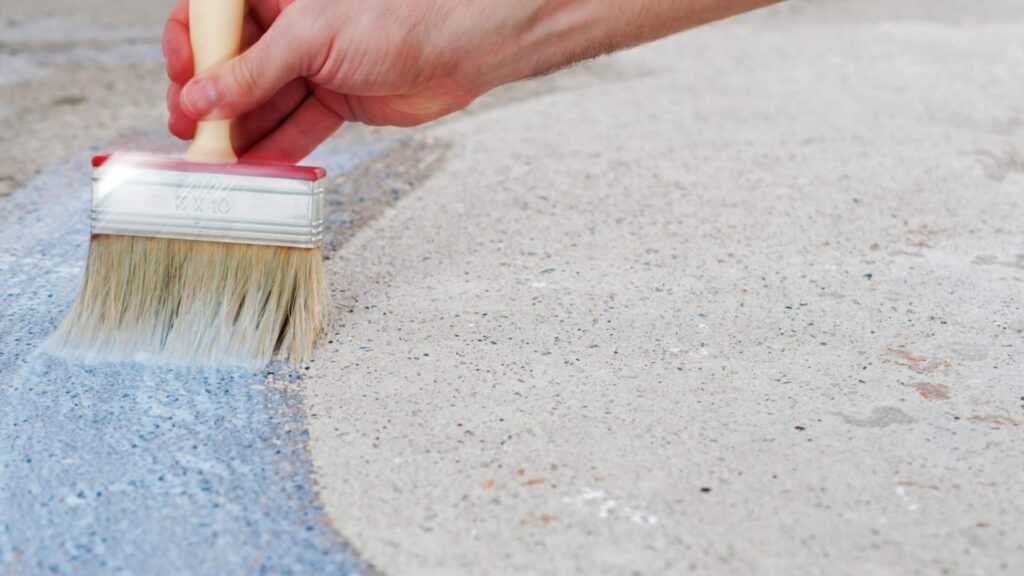
Preventing Future Paint Stains On Concrete
Concrete surfaces are highly durable and versatile, making them a popular choice for both indoor and outdoor spaces. However, one challenge many homeowners face is paint stains on concrete, which can be tough to remove. To save yourself the hassle of frequent cleaning or repainting, it’s wise to take preventive measures. Here’s a detailed guide on how to protect your concrete from future paint stains and keep it looking fresh and new.
1. Use Outdoor Mats and Covers
One of the easiest ways to prevent paint stains on concrete is by using outdoor mats or covers, especially in areas where spills are more likely, such as patios or near garden furniture. Mats can shield your concrete from accidental drips during painting projects or other DIY activities. Additionally, covers are particularly useful when you plan to repaint or stain nearby walls or surfaces. Investing in heavy-duty, weather-resistant covers ensures that paint doesn’t seep through and reach the concrete below.
- Tip: Look for mats that are designed for outdoor use, as they are often more durable and easier to clean than regular indoor ones. Rubber or vinyl mats are excellent options for protecting your concrete from not only paint but other elements like dirt and water.
2. Choose Removable or Easy-to-Clean Paints
If you anticipate needing to repaint certain areas over time, consider using paint products that are easier to remove from concrete. Some types of paint, like latex or water-based options, are less likely to adhere permanently to concrete compared to oil-based paints. This can make cleanup much easier if a spill occurs.
In addition, some paints are formulated specifically for easy removal, allowing you to maintain flexibility without compromising on color or finish. These paints are designed to provide a durable coating but can be stripped away if needed, reducing the risk of long-term stains on your concrete.
- Tip: When selecting paint for areas near concrete, check the product label for “removable” or “easy-clean” properties. This will give you peace of mind knowing that if a spill happens, it won’t be permanent.
3. Implement Regular Maintenance Practices
Maintaining your concrete surface is key to preventing stains and keeping it looking pristine over time. Regular sweeping and occasional power washing can remove debris, dirt, and any residue that may affect the concrete’s surface. Additionally, applying a concrete sealer once or twice a year can provide an added layer of protection against paint, water, and other substances that may lead to staining.
Concrete sealers work by creating a barrier between the surface and any external contaminants. They come in various finishes, such as matte or glossy, and can be easily applied with a roller or sprayer. By sealing the concrete, you’ll make it much harder for paint or other materials to penetrate the surface, allowing you to wipe away any mess before it becomes a lasting problem.
- Tip: If you’re using a sealer, make sure to follow the manufacturer’s recommendations for drying times and reapplication. A well-sealed concrete surface will stay cleaner longer and require less intensive upkeep in the future.
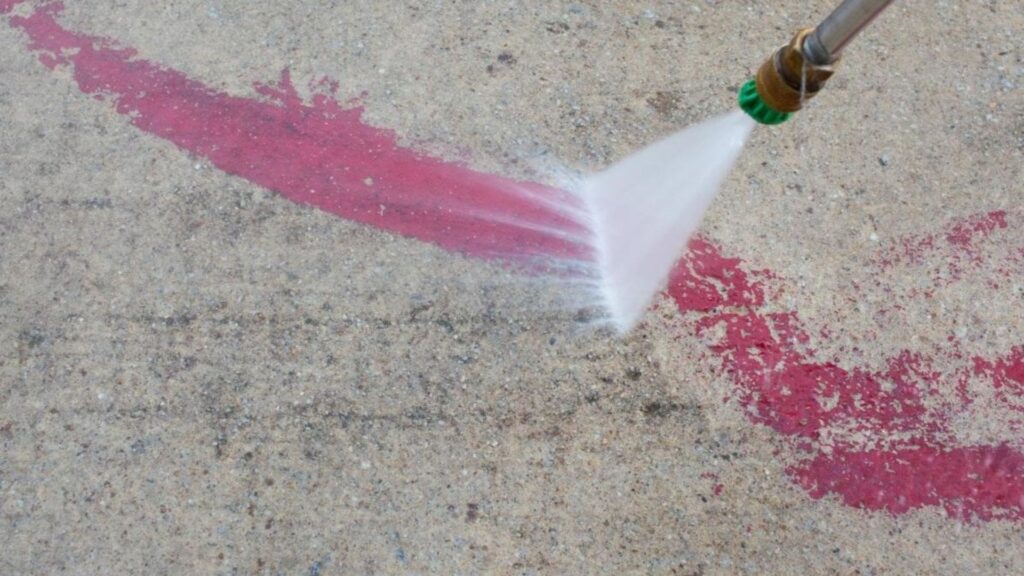
Common Mistakes To Avoid When Removing Paint From Concrete
When it comes to removing paint from concrete, many people think it’s as simple as scrubbing it off or applying a quick chemical solution. However, there are several common mistakes that can lead to unintended damage, prolong the process, or even pose safety risks. Here are some of the most critical mistakes to avoid when tackling this task:
1. Skipping Safety Precautions
One of the biggest mistakes you can make when removing paint from concrete is neglecting safety precautions. It’s essential to remember that most paint removal methods involve chemicals, abrasive tools, or high-pressure water, all of which can be hazardous if not handled properly. Before you begin, always wear the right protective gear. This includes safety goggles, gloves, and a mask to prevent inhaling harmful fumes or dust.
When dealing with chemicals, it’s crucial to follow the manufacturer’s guidelines, ensuring proper ventilation if you’re working indoors. Some chemicals used for paint removal can cause skin burns or respiratory issues, so taking the time to secure a safe working environment is non-negotiable. Never underestimate the importance of personal protective equipment (PPE), as it serves as your first line of defense against potential hazards.
2. Rushing the Process
Removing paint from concrete is not a task you want to rush. Many people, in an effort to get the job done quickly, end up causing more harm than good. If you try to force the paint off too quickly, especially with mechanical tools or chemicals, you can damage the surface of the concrete. Patience is key when undertaking this process.
Start with milder methods such as scrubbing or low-pressure washing before escalating to stronger chemicals or high-pressure tools. If you’re using a chemical paint remover, give it enough time to work according to the instructions—rushing to scrape off the paint before the chemical has properly loosened it can lead to frustration and subpar results. Remember, taking the time to do the job correctly will save you from the headache of costly repairs later on.
3. Using Too Much Pressure
Pressure washers can be highly effective for removing paint from concrete, but there’s a fine line between using enough pressure and using too much. One of the most common mistakes is turning up the pressure too high in an attempt to speed up the process. While this might seem like a good idea, overusing a pressure washer can erode the surface of the concrete, leading to pitting, cracks, or an uneven texture.
To avoid this, always start with the lowest pressure setting and gradually increase it as needed. Keep the nozzle at a reasonable distance from the surface to prevent the concentrated force from damaging the concrete. If you notice any signs of wear or erosion while pressure washing, stop immediately and reassess the technique. Opting for the right balance of water pressure will protect the integrity of your concrete surface while still effectively removing the paint.
Avoiding these common mistakes when removing paint from concrete can help you achieve better results, preserve the concrete’s surface, and ensure your safety throughout the process. Taking the time to use proper safety measures, avoid rushing, and applying the right amount of pressure can save you time, effort, and prevent costly repairs down the line.

FAQs: About How To Get Paint Off Concrete NZ
How do I remove old paint from concrete in New Zealand?
To remove old paint from concrete, start by cleaning the area thoroughly. Use a paint scraper or wire brush for small spots. For larger areas, consider applying a chemical paint stripper designed for concrete. Allow it to sit for the recommended time, then scrape off the paint. A pressure washer may also help with larger surfaces. Always follow safety guidelines, including proper disposal of chemicals as per NZ environmental regulations.
Can vinegar remove paint from concrete?
Yes, vinegar can help remove small paint stains from concrete, especially if the paint is water-based. Soak the stained area with vinegar, let it sit for about 15-30 minutes, then scrub with a stiff brush. This method is more effective on fresh or thin paint layers and is an eco-friendly alternative to chemical paint removers.
What is the best paint remover for concrete in NZ?
The best paint remover for concrete will depend on the type of paint and surface. In New Zealand, eco-friendly options like Citristrip or traditional chemical paint removers like methylene chloride-based strippers can be effective. Always ensure the product is safe for use in NZ’s environmental conditions and follow the manufacturer’s guidelines.
Is it safe to use a pressure washer to remove paint from concrete?
Yes, a pressure washer can be an effective tool for removing paint from concrete, especially on larger surfaces like driveways or patios. However, be cautious with the pressure setting to avoid damaging the concrete. For paint removal, a pressure range between 2000-3000 PSI is typically sufficient. You can rent pressure washers from local NZ hardware stores.
How do I dispose of paint and chemicals after removal?
In New Zealand, it’s important to dispose of paint and chemicals responsibly. Avoid washing them down drains or into stormwater systems. Contact your local council for guidelines on hazardous waste disposal or look for special collection services for paint and chemicals.
Can I remove paint from concrete without chemicals?
Yes, you can remove paint from concrete without chemicals by using methods such as scraping, sanding, or using a pressure washer. Natural solutions like vinegar or baking soda can also work on smaller paint stains. However, for larger or more stubborn paint, a chemical stripper might be necessary for complete removal.
How long does it take to remove paint from concrete?
The time required to remove paint from concrete depends on the method used and the amount of paint. Scraping or using a pressure washer may take a few hours, while chemical strippers require time to set before removal. Generally, expect the entire process to take anywhere from 2-6 hours depending on the size of the surface and the number of treatments needed.
What should I do if the paint won’t come off after the first attempt?
If the paint doesn’t come off after the first attempt, try applying a second coat of paint stripper or use a stronger chemical stripper. For extremely stubborn paint, you may need to repeat the process or consider professional sandblasting services available in New Zealand.
Do I need to seal the concrete after removing paint?
Yes, it’s a good idea to seal the concrete after removing paint to protect it from future stains, weather damage, and new paint sticking to the surface. Sealing your concrete can also improve its appearance and durability. Look for concrete sealers available at local NZ hardware stores.
Should I hire a professional to remove paint from concrete?
While many DIY methods can be effective, you may want to hire a professional if you’re dealing with large areas, old or stubborn paint, or if you want to avoid potential damage to your concrete. Professionals in NZ can use advanced techniques like sandblasting or chemical treatments to ensure a thorough and safe removal process.
Conclusion
In conclusion, removing paint from concrete can be achieved through a variety of effective methods. These include using power washing, chemical paint strippers, or more natural solutions like baking soda or vinegar. Each method requires careful application to ensure the concrete surface is not damaged while effectively lifting the paint. Whether you’re dealing with a fresh spill or tackling an older, more stubborn layer, patience and the right approach will help you restore your concrete to its original state. Now that you’re equipped with these strategies, give them a try and see the results for yourself. If you have any questions or want to share your experience, feel free to drop a comment below!
About the Author:
Mike Veail is a recognized digital marketing expert with over 6 years of experience in helping tradespeople and small businesses thrive online. A former quantity surveyor, Mike combines deep industry knowledge with hands-on expertise in SEO and Google Ads. His marketing strategies are tailored to the specific needs of the trades sector, helping businesses increase visibility and generate more leads through proven, ethical methods.
Mike has successfully partnered with numerous companies, establishing a track record of delivering measurable results. His work has been featured across various platforms that showcase his expertise in lead generation and online marketing for the trades sector.
Learn more about Mike's experience and services at https://theleadguy.online or follow him on social media:
